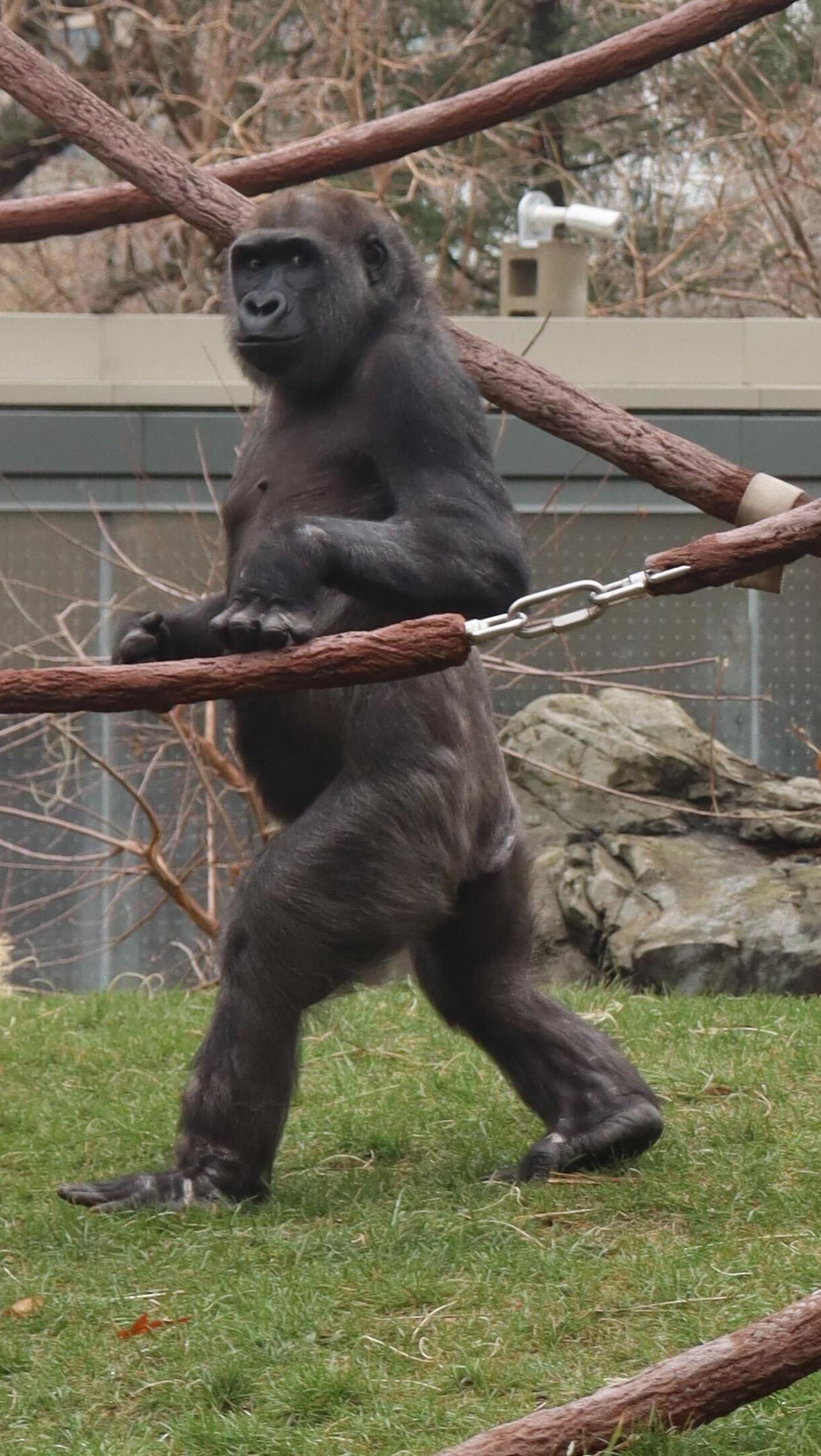- Understanding the unique locomotion behavior of Western lowland gorillas, especially the bipedal walking, with a focus on Nyah.
- Exploring the possible reasons and advantages of bipedalism in gorillas.
- The significance of Nyah’s behavior in the context of zoo management and conservation education.
- How observing gorillas like Nyah enhances our understanding of primate evolution and behavior.
- The role of zoos in promoting wildlife conservation and educating the public about endangered species like the Western lowland gorilla.
Western lowland gorillas are fascinating creatures that captivate the minds of researchers and wildlife enthusiasts alike. Typically, these majestic primates are seen moving through the forests of Central Africa using quadrupedal knuckle-walking, which is the most efficient locomotion method for their anatomy. However, on occasion, gorillas exhibit bipedalism, walking on two legs rather than four. This behavior is particularly intriguing when observed in individuals like Nyah, who is noted for her frequent bipedal walking and distinct upright posture.
Gorillas, belonging to the genus Gorilla, are the largest of the great apes and are known for their strong build and predominantly terrestrial lifestyle. Bipedalism is a rare occurrence in gorillas and is usually associated with young individuals during playful activities or when they want to get a better view of something intriguing at a distance. Yet, Nyah stands apart. Her propensity for walking upright more often than her counterparts has sparked a flurry of interest and study.
Scientists and ethologists study Nyah’s behavior to uncover why she resorts to bipedalism more frequently than others. Several factors may contribute to such behavior, including physical attributes, environmental conditions, or even social dynamics within her group. In the wild, gorillas’ upright walking could aid in surveying their surroundings or carrying food and offspring, enabling them to navigate through the dense underbrush with ease. For a gorilla like Nyah, such behavior could be a combination of natural curiosity and adaptive advantage, allowing her to explore her environment more thoroughly.
Nyah’s behavior presents a remarkable opportunity for experts in zoo management and wildlife conservation. Zoos play a critical role in education and conservation efforts, offering insights into the behaviors and lives of species that are often threatened in their native habitats. By observing Nyah, zookeepers can gather data that could help in creating more engaging, informative exhibits, emphasizing the importance of conserving gorilla habitats in the wild. Visitors, witnessing such unique behaviors, leave with a richer understanding of the intricacies of gorilla life, fostering a connection that strengthens public support for conservation initiatives.
The observation of bipedalism in Nyah and other gorillas contributes to the broader understanding of primate evolution and behavior. Bipedalism is a key feature that distinguishes the human lineage from other primates, and understanding its occurrence in gorillas can provide insight into our evolutionary past. Scientists can study how anatomical features, such as the musculoskeletal structure, facilitate this form of locomotion and draw parallels to early hominins.
Moreover, the role of zoos extends beyond entertainment. They serve as bastions of conservation, providing sanctuary for endangered species like the Western lowland gorilla and educating the public on the dire need for habitat preservation. Effective zoo management involves implementing enrichment programs that promote natural behaviors and ensure the well-being of the animals. By prioritizing the health and happiness of creatures like Nyah, zoos contribute significantly to global conservation efforts.
Conservation education is a vital aspect of modern-day zoos. Observations of Nyah’s bipedal locomotion can be integrated into educational programs highlighting the challenges faced by gorillas in the wild. These programs can focus on threats such as habitat destruction, poaching, and the bushmeat trade, elucidating the precarious situation these primates face. By educating young minds and inspiring future generations, zoos can cultivate advocates for wildlife and natural environments, making a lasting impact on conservation efforts.
Zoos worldwide continue to collaborate on breeding programs aimed at increasing population numbers for endangered species. The Western lowland gorilla, listed as critically endangered by the International Union for Conservation of Nature (IUCN), benefits immensely from such programs. The genetic diversity maintained through responsible breeding ensures healthy populations that can potentially be reintroduced to their natural habitats.
Nyah’s bipedal adventures have captured the imagination of many, both within and outside the academic community. While some may view her behavior as simply charming or amusing, it holds significant implications for conservation, education, and scientific research. By documenting and understanding these behaviors, scientists can develop more effective conservation strategies that benefit not only gorillas but the entire ecosystem upon which they depend.
In essence, the story of Nyah walking around serves as a reminder of the complexity and beauty of nature that surrounds us. It underscores the importance of preserving these moments, ensuring that future generations can marvel at the wonders of the animal kingdom. Through concerted efforts in research, conservation, and education, we can work towards a future where biodiversity thrives and creatures like Nyah continue to roam the earth, their presence a testament to the resilience of life.
*****
Source Description
That’s just Nyah walking around! 🦍
Western lowland gorillas typically are seen walking quadrupedally (on 4 limbs), but occasionally walk on two legs, or bipedally. This way of walking is most often seen in younger gorillas during play or briefly when they’re trying to get a closer look at something in the distance. Nyah’s keepers note that she tends to walk bipedally frequently, and has a very distinct, upright posture.
📸 Jennifer H.


